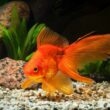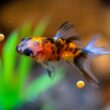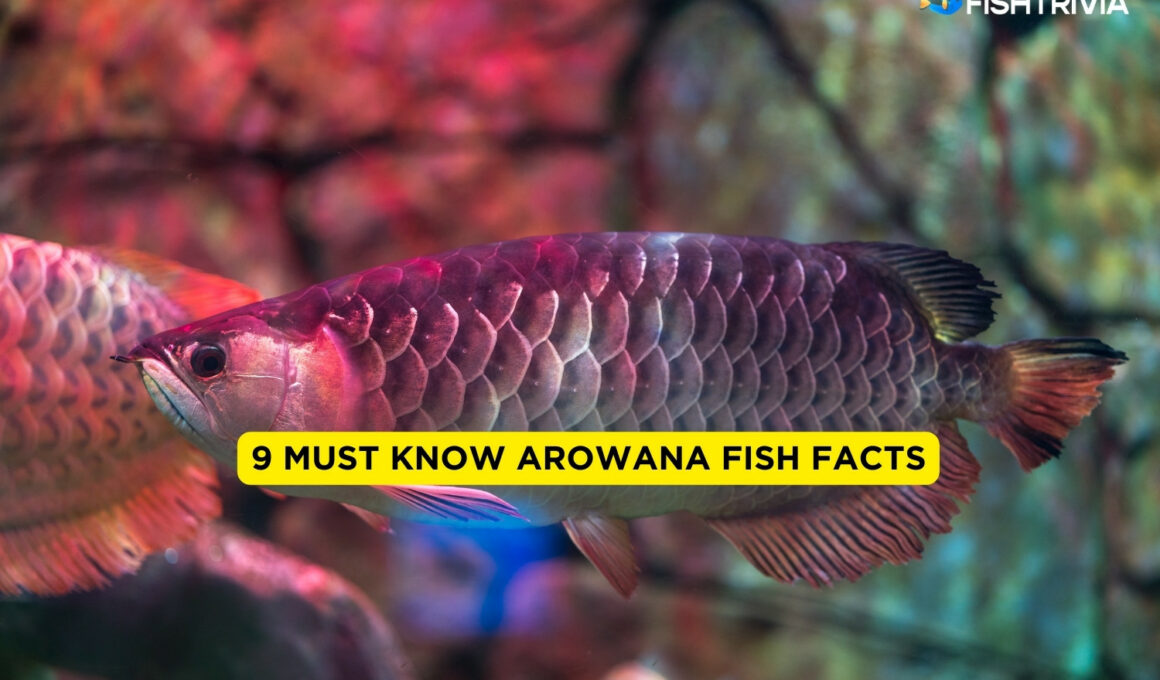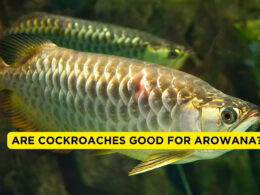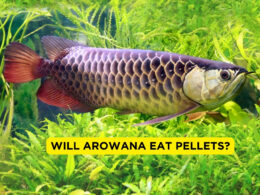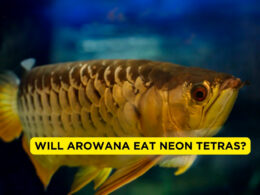In this article Show
Arowana fish, often hailed as living gems of the aquarium, hold a special place in the hearts of fish enthusiasts. These majestic creatures, known for their striking appearance and dynamic behavior, have captivated aquarists worldwide.
As an experienced fish keeper, I’ve had the privilege of nurturing these magnificent fish and understanding their unique needs and characteristics.
In this guide, we’ll explore 9 must-know facts about Arowana fish. Whether you’re a seasoned aquarist or just starting to explore the world of home aquariums, this information will enrich your knowledge and appreciation of these incredible fish.
Each fact is carefully chosen to provide a comprehensive understanding of these fascinating creatures. By the end of this guide, you’ll not only be more informed about Arowanas but also equipped with practical insights to enhance your fish-keeping experience.
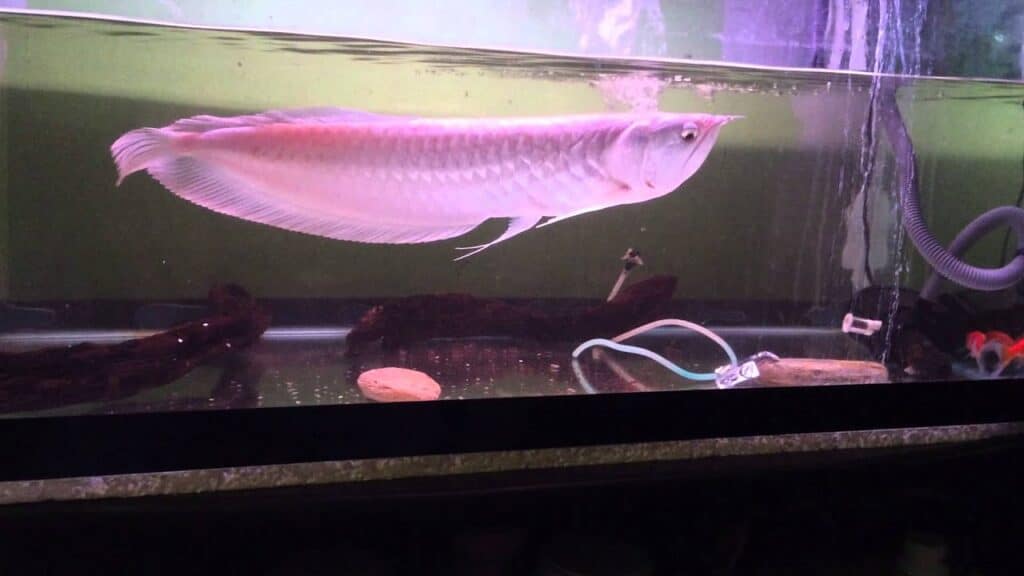
Fact 1: Origin and Habitat
The Arowana fish, known for its grace and beauty, hails from diverse geographic locations, each giving rise to distinct species with unique traits. These fish primarily originate from freshwater river systems in South America, Southeast Asia, and parts of Africa.
South American Arowanas
Found predominantly in the Amazon River Basin, these species, including the Silver Arowana, thrive in the slow-moving waters of floodplains and wetlands. Their habitat is characterized by a mix of clear and blackwater environments, with a rich biodiversity that provides ample food and shelter.
Asian Arowanas
These species, such as the highly prized Golden Arowana, are native to Southeast Asia. They are typically found in freshwater areas like rivers, lakes, and swampy regions across countries like Indonesia, Malaysia, and parts of Indochina. Their habitat often features soft, acidic water with a dense canopy of vegetation, offering both protection and abundant food sources.
African Arowanas
While less popular in the aquarium trade, African Arowanas inhabit various river systems in Africa. Their environment tends to be more varied, from flowing rivers to stagnant water bodies, adapting well to different water conditions.
The natural habitats of Arowana fish share common characteristics: warm temperatures, abundant vegetation, and a rich supply of food.
These environments allow Arowanas to exhibit their natural behaviors, such as surface feeding and leaping out of the water to catch prey. Understanding these natural conditions is crucial for replicating a suitable environment in home aquariums, ensuring the health and well-being of these majestic fish.
Fact 2: Species Varieties
Arowanas come in several captivating varieties, each with its own unique allure and characteristics. The most renowned among them are the Silver, Golden, and Red Arowanas, each distinct in appearance and origin.
Silver Arowana (Osteoglossum bicirrhosum)
Native to South America, particularly the Amazon River Basin, the Silver Arowana is a sight to behold. It’s characterized by its shimmering silver body and large, scaly appearance. These fish can grow quite large, often reaching up to 3 feet in length in captivity.
They have an elongated body and a distinctive jawline, with a mouth that opens in a unique, upward direction. Silver Arowanas are known for their impressive leaping ability, often jumping out of the water to catch prey.
Golden Arowana (Scleropages formosus)
Hailing from Southeast Asia, the Golden Arowana is often considered the jewel of the Arowana species due to its stunning coloration. It varies from a deep, honey-gold hue to vibrant shades of orange and red, depending on the specific variety and quality of care.
This species is revered in Asian cultures for its supposed wealth-bringing qualities and is often a centerpiece in aquariums. Golden Arowanas have a more compressed body compared to their Silver counterparts and are known for their graceful swimming and regal presence.
Red Arowana (Scleropages legendrei)
The Red Arowana is another Asian variety, highly sought after for its striking red color, which can range from deep maroon to bright chili red. This species is rarer and more expensive than the others, making it a prized possession among enthusiasts.
The Red Arowana’s coloration becomes more vivid as it matures, with juveniles starting out more muted. They share a similar body shape to the Golden Arowana but are distinguished by their more intense coloration.
Fact 3: Size and Lifespan
Arowana fish are known not just for their beauty but also for their impressive size and long lifespan, which make them a long-term commitment for aquarists. The average size and lifespan can vary among species, but they generally share characteristics of significant growth and longevity.
Average Size
Arowanas are notable for their large size. In a well-maintained aquarium, Silver Arowanas can grow up to 3 feet (90 cm) in length, while the Asian varieties, like the Golden and Red Arowanas, typically reach about 2 to 3 feet (60-90 cm). These sizes require spacious aquariums to accommodate their growth and ensure their well-being.
Lifespan
With proper care, Arowana fish can have a remarkably long lifespan. They typically live for 10 to 15 years, but it’s not uncommon for them to reach 20 years or more in an ideal environment. This long life makes them a substantial commitment for fish keepers.
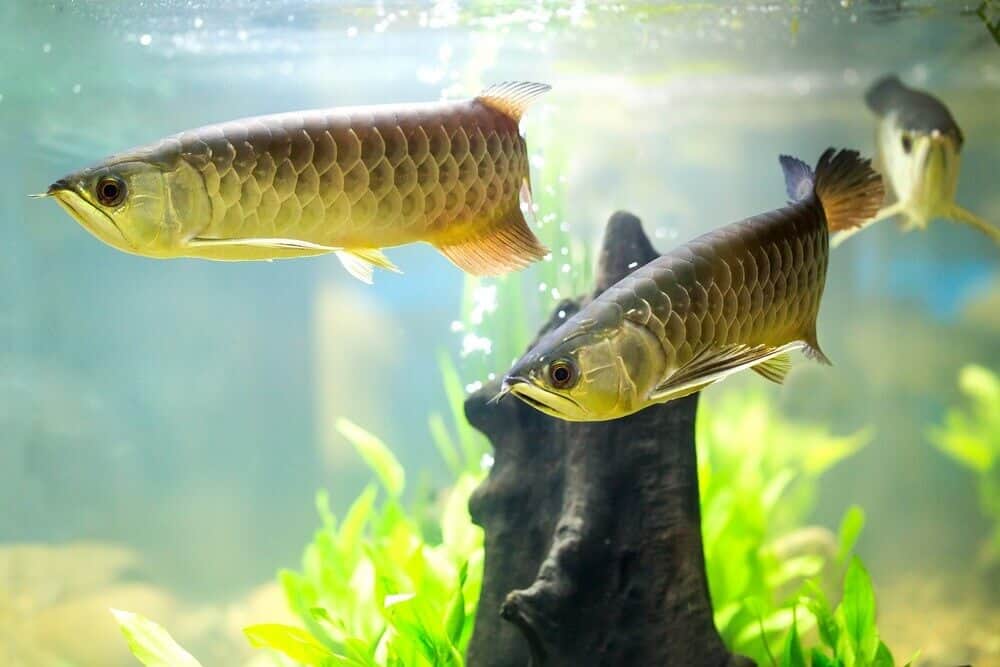
Fact 4: Diet and Nutrition
A well-balanced diet is crucial for maintaining the health, coloration, and vitality of Arowana fish. These carnivorous creatures have specific dietary requirements that, when met, contribute significantly to their overall well-being. The following are the dietary requirements of Arowana fish:
1. Protein-Rich Diet
As carnivores, Arowanas thrive on a high-protein diet. In the wild, their diet consists primarily of insects, small fish, and occasional amphibians or crustaceans. In captivity, this diet needs to be replicated as closely as possible.
2. Variety is Key
A diverse diet prevents nutritional deficiencies and promotes vibrant coloration. This variety can include live foods like feeder fish, crickets, and mealworms, as well as frozen or freeze-dried options like shrimp, bloodworms, and krill.
3. Pellets and Commercial Foods
High-quality commercial pellets designed for large carnivorous fish can be a convenient and balanced dietary addition. Ensure these pellets are appropriately sized for your Arowana to consume easily.
Fact 5: Breeding and Reproduction
Breeding Arowana fish is a complex and challenging process, often requiring expert knowledge and specific conditions. Understanding their natural breeding habits and reproductive cycle is crucial for anyone interested in Arowana breeding, especially in a captive environment.
Breeding Habits and Reproductive Cycle
1. Natural Breeding Behavior
In the wild, Arowanas typically breed during the rainy season. This period is characterized by flooded areas where Arowanas find suitable conditions for spawning.
2. Courtship and Spawning
The courtship process involves elaborate displays and movements to attract a mate. Once a pair is formed, the female lays eggs, which are then fertilized by the male. Arowana eggs are large and buoyant, often described as pea-sized.
3. Mouthbrooding
A unique aspect of Arowana breeding is their method of mouthbrooding. After fertilization, the male Arowana carries the eggs in his mouth, providing protection and oxygenation until they hatch. This period can last for about 50 to 60 days, during which the male may not eat.
Challenges in Breeding Arowana in Captivity
1. Simulating Natural Conditions
Replicating the natural triggers for breeding, such as changes in water level and temperature that mimic the rainy season, can be difficult in an aquarium setting.
2. Pairing and Compatibility
Finding a compatible pair is challenging, as Arowanas can be selective in their mating preferences and often exhibit territorial behavior.
3. Health of the Brooding Male
The health of the mouthbrooding male can be a concern, as he may not eat during the brooding period, leading to weight loss and vulnerability to diseases.
4. Survival of the Fry
Ensuring the survival of the fry post-hatching is another challenge. They require specific care and nutrition, and the risk of mortality is high in the early stages.
5. Regulatory and Ethical Considerations
Breeding certain species of Arowana, especially those that are endangered or protected, can involve legal and ethical considerations. This requires breeders to be well-informed about regulations and conservation issues.
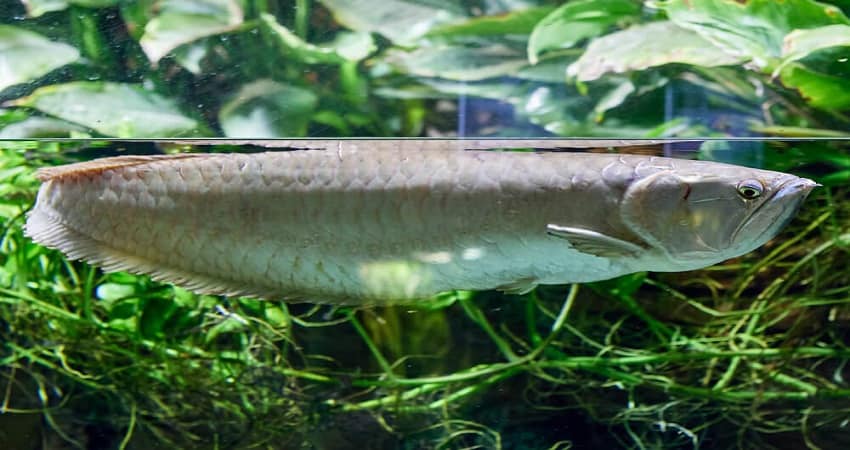
Fact 6: Aquarium Requirements
Creating an ideal aquarium for Arowana fish is crucial for their health and well-being. A proper setup not only accommodates their size and behavior but also replicates their natural habitat to the extent possible. Here’s what you need to know about setting up the perfect Arowana tank:
1. Spacious Environment
Due to their large size and active nature, Arowanas require a spacious aquarium. For a single adult Arowana, a tank of at least 250 gallons is recommended. The tank should be long and wide rather than tall, as Arowanas are surface swimmers and need ample horizontal space.
2. Height Considerations
Arowanas are known jumpers, so the aquarium should have a securely fitted lid to prevent them from leaping out.
Water Conditions
1. Temperature
The water temperature should be kept between 75°F and 85°F (24°C – 29°C), mimicking their tropical habitat.
2. pH Levels
A slightly acidic to neutral pH, ranging from 6.5 to 7.5, is ideal for Arowanas. Regular testing and adjustments may be necessary to maintain these levels.
3. Filtration System
A powerful and efficient filtration system is essential to keep the water clean and oxygen-rich. Arowanas are sensitive to ammonia and nitrites, so a system that can effectively manage these levels is crucial.
4. Regular Water Changes
Regular water changes (about 15-20% weekly) are necessary to maintain water quality, especially considering the large size and dietary habits of Arowanas.
Fact 7: Conservation Status
The conservation status of Arowana fish varies among species, but many face challenges due to human activities and environmental changes. Understanding these issues is crucial for responsible ownership and conservation efforts.
Conservation Status of Different Arowana Species
1. Asian Arowanas
Often the most affected, many Asian Arowana species are listed on the CITES (Convention on International Trade in Endangered Species of Wild Fauna and Flora) Appendix I, meaning international trade is heavily restricted or banned. This includes the popular Red and Golden Arowanas, which have seen their wild populations decline due to overfishing and habitat destruction.
2. South American Arowanas
While not as critically endangered as their Asian counterparts, species like the Silver Arowana also face threats from habitat loss and pollution. However, they are not currently listed under CITES.
3. African Arowanas
These species are less known in the aquarium trade and, as such, face fewer threats from overharvesting. However, habitat changes and pollution still pose risks.
Impact of Human Activities
1. Overfishing for the Aquarium Trade
The high demand for Arowanas, especially in Asian markets, has led to overfishing. This is particularly true for the more colorful and rare varieties, which fetch high prices.
2. Habitat Destruction
Deforestation, pollution, and changes in water systems due to human activities have significantly impacted the natural habitats of Arowanas, affecting their breeding and feeding grounds.
Legal Regulations and Conservation Efforts
1. CITES Regulations
To combat overfishing, CITES has imposed regulations on the international trade of certain Arowana species. This includes requiring permits and ensuring that traded fish are bred in captivity, not taken from the wild.
2. Breeding Programs
Captive breeding programs have been developed to meet the demand for Arowanas without impacting wild populations. These programs also help maintain genetic diversity and raise awareness about the species.
3. Habitat Protection Initiatives
Efforts to protect and restore natural habitats are crucial for the survival of wild Arowana populations. This includes conserving river systems and forests, as well as implementing pollution control measures.
Fact 8: Symbolism and Cultural Significance
Arowana fish are not just prized for their striking appearance; they also carry profound symbolic and cultural significance in various societies. This deep-rooted symbolism has greatly influenced their popularity in the aquarium trade.
Symbolism in Different Cultures
1. Asian Societies
In many Asian cultures, particularly Chinese, the Arowana is often called the “Dragon Fish” due to its dragon-like scales and barbels. It’s revered as a symbol of wealth, prosperity, and good luck. The belief that Arowanas can ward off evil and bring good fortune makes them highly sought-after, especially during auspicious events like the Chinese New Year.
2. Southeast Asian Beliefs
In countries like Indonesia and Malaysia, Arowanas are also associated with luck and wealth. Their presence in home aquariums is believed to have a positive impact on the success and well-being of the household.
3. Symbolism in Feng Shui
In Feng Shui, the Arowana is considered a powerful symbol of abundance and prosperity. Placing an Arowana in a specific part of the home or office is believed to attract positive energy and financial growth.
Impact on Aquarium Trade
1. High Demand
The symbolic significance of Arowanas has led to high demand, particularly in the Asian aquarium market. This has turned Arowana fish into luxury items, with some rare varieties fetching exorbitant prices.
2. Selective Breeding
To cater to this demand, there has been a surge in selective breeding to produce Arowanas with specific colors and traits that are believed to have stronger auspicious qualities.
3. Conservation Challenges
The popularity of Arowanas for their symbolic value has posed challenges in conservation. Overfishing and illegal trade, driven by high demand, have led to concerns about the sustainability and ethical aspects of the Arowana trade.
4. Cultural Awareness
The fascination with Arowanas has also led to increased cultural awareness and interest in the traditions and beliefs of different societies, fostering a deeper appreciation for the fish beyond its aesthetic value.
Fact 9: Fascinating Feeding Habits and Skills of Arowana Fish
One of the most intriguing aspects of Arowana fish is their unique feeding habits and remarkable hunting skills, which set them apart from many other aquarium fish.
Surface Feeding and Hunting Technique
1. Natural Predators
In their natural habitat, Arowanas are apex predators. They primarily feed at the water’s surface, preying on insects, small birds, and even bats in some cases.
2. Impressive Jumping Ability
Arowanas are known for their incredible jumping skills. They can leap several feet above the water’s surface to catch prey. This ability is not just for feeding but also a defensive mechanism in the wild.
3. Visual Hunters
Arowanas have excellent eyesight, which they use to spot potential prey above the water’s surface. This acute vision, combined with their swift movements, makes them efficient hunters.
Feeding in Captivity
1. Mimicking Natural Diet
In a home aquarium, it’s important to mimic an Arowana’s natural diet for their physical health and to satisfy their instinctual hunting behavior. This can be done by providing live or floating foods that encourage them to feed at the surface.
2. Interactive Feeding
Feeding Arowanas can be an interactive experience. Many aquarists enjoy watching their Arowana leap out of the water to take food from tweezers or even gently from their hand.
3. Dietary Needs
While their diet in captivity usually consists of fish, shrimp, and specialized pellets, incorporating variety is important for their nutritional balance.
Understanding and catering to the Arowana’s natural feeding behavior is not only crucial for their health but also one of the most fascinating aspects of keeping these majestic fish. Observing their feeding rituals can be a truly captivating experience, showcasing the blend of agility, precision, and natural instinct that Arowanas possess.




